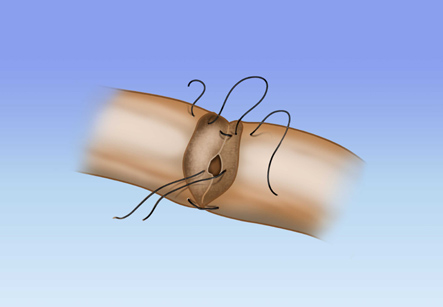Vasectomy Reversal
Introduction
A vasectomy is considered as a permanent method of birth control or male sterilization in which the tubes carrying sperms known as vas deferens are cut causing inability to fertilize the female egg. Reversal of vasectomy, also called as vasostomy, reconnects these tubes that were cut during vasectomy.
This is usually an outpatient procedure and does not require an overnight stay in the hospital. Reversal is done under Spinal or general anesthesia to ensure that the patient is completely still during the surgery.
The success of vasectomy reversal depends on the time period elapsed between the vasectomy and the reversal. As the time progresses, additional blockages can form and sometimes there is development of antibodies to own sperms.
Iran ranks first in the region in terms of infertility treatment studies

If there is development of blockage between the vas deferens and the epididymis, its correction known as vaso-epididymostomy is difficult and may require more time.
Indications
Vasectomy reversal is performed when the man has undergone a vasectomy and now wants to beget a child. This may be required in situations like remarriage, death of wife or only child or for voluntary reasons.
When considering vasectomy reversal, following things are to be kept in mind:
• The procedure is more successful in hands of experienced and skilled surgeon.
• Vasectomy reversals are most successful when done by a surgeon under a surgical microscope (microsurgical technique).
• A vasectomy reversal is an expensive procedure.
• It is prudent to discuss with the doctor about the steps of the procedure, risks and possible complications, the type of technique used and experience of doctor in this field.
• Involvement of partner in this meeting with the doctor may be helpful for support.
Before vasectomy reversal surgery, the doctor may do a few things:
• To make sure whether the vasectomy reversal will work or not, the doctor does a complete physical examination and asks a number of questions about the general health. Presence of addictions, other health problems like blood pressure, diabetes as well as any medications being taken by the patient is confirmed. Blood thinning medications should be stopped at least two weeks before surgery, if being taken.
• It is important to check whether the man can produce healthy sperm. For most men, having gotten a woman pregnant before is an enough proof for this. However, in case of doubt, the doctor may order a testicular biopsy. In this test, a needle is inserted in the testicle to remove fluid and the sperms are checked.
• There is a need to confirm that the partner is capable of having a child. The doctor makes sure that the partner does not have any fertility problems, especially in case if the woman never had a child or her age is over 35 years. This may require a gynecological examination and related tests.
• An athletic supporter is required to be worn after surgery to support the scrotum and hold bandages in place.
• A written, informed consent is taken from the person.
After the Surgery:
Chances of a successful vasectomy reversal decreases with time. Reversals are usually more successful within first 10 years of vasectomy.
Vasectomy reversal procedure usually takes about 2 to 4 hours, followed by a few more hours for recovery from the general or spinal anesthesia. Patient can go home on the same day.
Pain after surgery may be mild to moderate and it can be relieved by regular pain killers. The patient can be able to resume normal activities, including sex, within 3 weeks of surgery.
Risks of vasectomy reversal include:
• Infection and bleeding at the site of surgery.
• Fluids build up in the scrotum known as hydrocele which may require draining.
• Injury to the arteries or nerves in the scrotum
Results:
Chances of a successful vasectomy reversal decreases with time. Reversals are usually more successful within first 10 years of vasectomy. Also, there are even more chances of success if it is done within 3 years of vasectomy.
In general, vasectomy reversal has overall pregnancy rates of greater than 50%. After successful vasectomy reversal, sperms usually appear in the semen after a few months, but it can take a year or more.